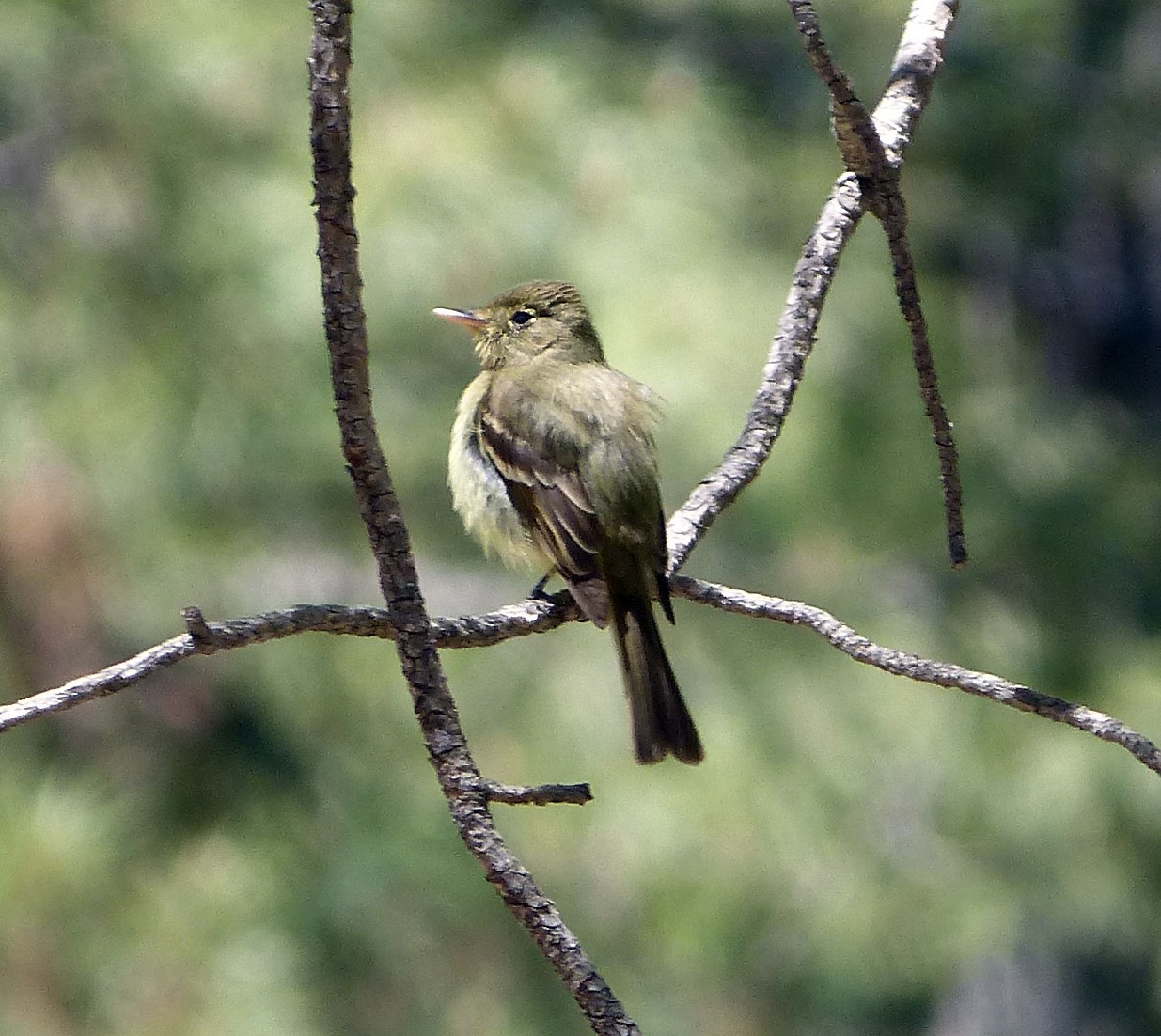Cordilleran Flycatcher
A species of Empidonax flycatchers Scientific name : Empidonax occidentalis Genus : Empidonax flycatchers
Cordilleran Flycatcher, A species of Empidonax flycatchers
Botanical name: Empidonax occidentalis
Genus: Empidonax flycatchers
Content
Description General Info
Description
The Cordilleran flycatcher (Empidonax occidentalis) is a small insect-eating bird. It is a small Empidonax flycatcher, with typical length ranging from 13 to 17 cm. Adults have olive-gray upperparts, darker on the wings and tail, with yellowish underparts; they have a conspicuous teardrop-shaped white eye ring, white wing bars, a small bill and a short tail. Many species of this genus look closely alike. The best ways to distinguish species are by voice, by breeding habitat, and by range. This bird is virtually identical to the Pacific-slope flycatcher. These two species were formerly considered a single species known as western flycatcher. The species were split by the American Ornithologists’ Union in 1989. The Pacific-slope flycatcher is a breeding bird of the Pacific Coast forests and mountain ranges from California to Alaska; the Cordilleran is a breeding bird of the Rocky Mountains. They have different songs and calls. Cordilleran flycatchers' preferred breeding habitat is pine-oak or coniferous forest, usually near running water. They make a cup nest on a fork in a tree, usually low in a horizontal branch. Females usually lay two to five eggs. These birds migrate to Mexico for the winter, where the Mexican central-southern birds are resident. The non-resident birds are on the western coast from Jalisco northwards, and then to inland regions, in a corridor strip on the western flank of the Sierra Madre Occidental. The Cordilleran flycatcher waits on an open perch of a shrub or low branch of a tree and flies out to catch insects in flight (hawking), and also sometimes picks insects from foliage while hovering (gleaning). The song includes notes represented as pseet, ptsick, seet usually sung rapidly together. The ptsick or ptik note has the first syllable higher-pitched than the second—the only difference from the Pacific-slope flycatcher's song (Sibley 2000). The male's typical position call is a loud and distinctive pit pete or tse-seet, but some give a "rising tsweep" or a "slurred tseeweep, like the calls of Pacific-slope flycatchers (Sibley 2000). 
Size
14-15 cm (5.5-6 in)
Colors
Brown
Black
Green
Yellow
Gray
Life Expectancy
7 years
Nest Placement
Tree
Feeding Habits
Cordilleran Flycatcher primarily consume insects, such as caterpillars, beetles, wasps, bees, flies, and spiders, usually captured mid-flight or gleaned from vegetation. Their foraging largely takes place below 30 feet within trees or shrubs, often catching prey beneath canopies. They occasionally consume elderberries and blackberries.
Habitat
Cordilleran Flycatcher's habitat encompasses cool coniferous or mixed forests at higher elevations, typically beside water sources such as creeks, streams, or rivers. These birds are found in moist woodlands and shady mountain canyons, often in areas with pines, firs, and aspens, complemented by underbrush like serviceberry and willows. During migration, shaded vegetative areas rich in water and insects are crucial, and in winter, they shift to pine-oak forests in mountainous regions.
Nest Behavior
The female cordilleran Flycatcher is primarily responsible for nest building, using materials to create a compact cup. Egg-laying follows nest construction, and both parents engage in caring for eggs and feeding the hatched young.
Nest Characteristics
Cordilleran Flycatcher constructs nests near water on rocky slopes, stream banks, or utilizes existing structures such as abandoned nests, mines, and buildings. The cup-shaped nest is built from moss, lined with bark, rootlets, grass, or hair, and bound with spiderwebs, measuring roughly 4.7 inches wide and 2 inches deep.
Dite type
Insectivorous
General Info
Feeding Habits
Bird food type
Bird Feeder Type

Platform
Sounds
Song
Recording location: United States
Call
Recording location: Mexico
Song
Recording location: Mexico
Behavior
Cordilleran Flycatcher exhibit a distinctive territoriality during breeding season, with males vocalizing extensively to establish territories and attract mates. They actively defend these territories against intrusions by conspecifics and other small flycatchers. While singing decreases after pairing, dawn choruses persist through nesting. In terms of nesting responsibilities, female cordilleran Flycatcher solely construct the nests and principally conduct incubation, though both parents contribute to feeding their young. Their daily routine centers around foraging for insects, which they adeptly catch in flight, and interacting with their environment.
Species Status
Not globally threatened.
Scientific Classification
Phylum
Chordates Class
Birds Order
Perching birds Family
Tyrant flycatchers Genus
Empidonax flycatchers Species
Cordilleran Flycatcher 